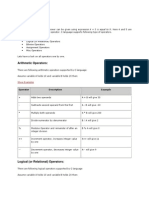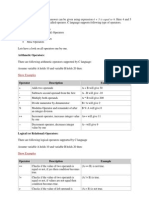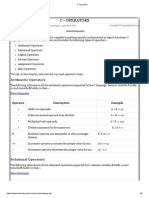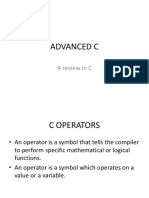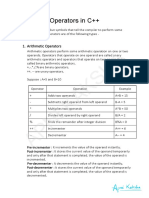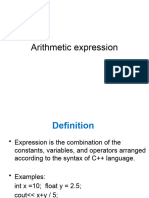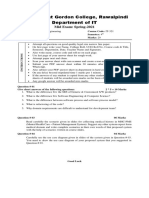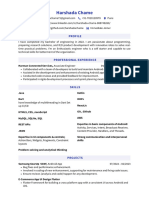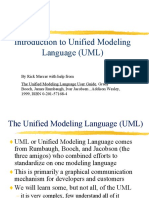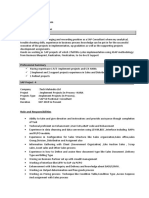0% found this document useful (0 votes)
65 views11 pagesArithmetic Operators: Operator
An operator is a symbol that performs mathematical or logical operations on operands. C++ supports various types of operators including arithmetic, relational, logical, bitwise, and assignment operators. Operators have precedence that determines the order of operations in an expression. For example, multiplication has higher precedence than addition, so an expression like 7 + 3 * 2 equals 13, not 20.
Uploaded by
AlhajiCopyright
© © All Rights Reserved
We take content rights seriously. If you suspect this is your content, claim it here.
Available Formats
Download as DOCX, PDF, TXT or read online on Scribd
0% found this document useful (0 votes)
65 views11 pagesArithmetic Operators: Operator
An operator is a symbol that performs mathematical or logical operations on operands. C++ supports various types of operators including arithmetic, relational, logical, bitwise, and assignment operators. Operators have precedence that determines the order of operations in an expression. For example, multiplication has higher precedence than addition, so an expression like 7 + 3 * 2 equals 13, not 20.
Uploaded by
AlhajiCopyright
© © All Rights Reserved
We take content rights seriously. If you suspect this is your content, claim it here.
Available Formats
Download as DOCX, PDF, TXT or read online on Scribd
/ 11








